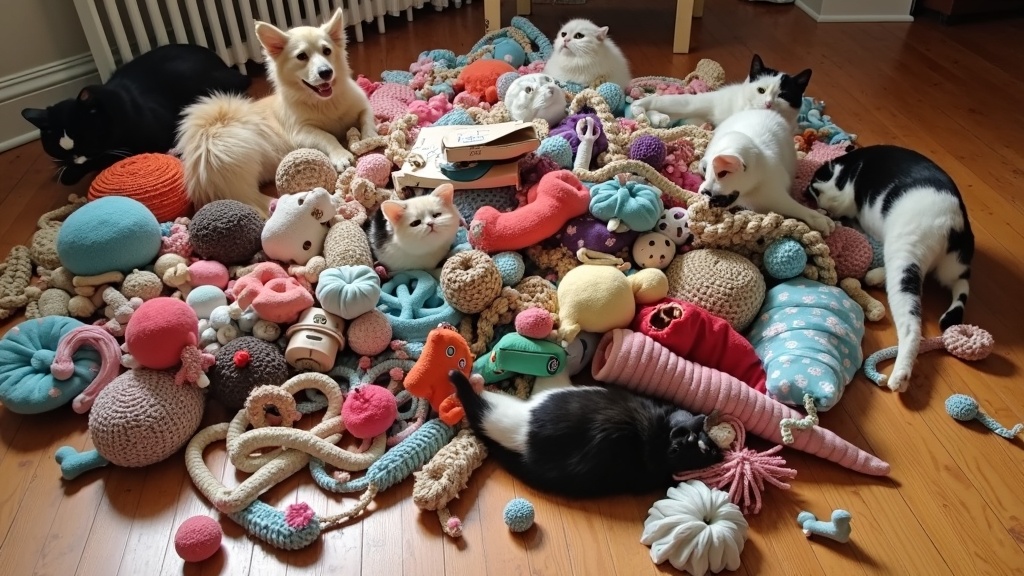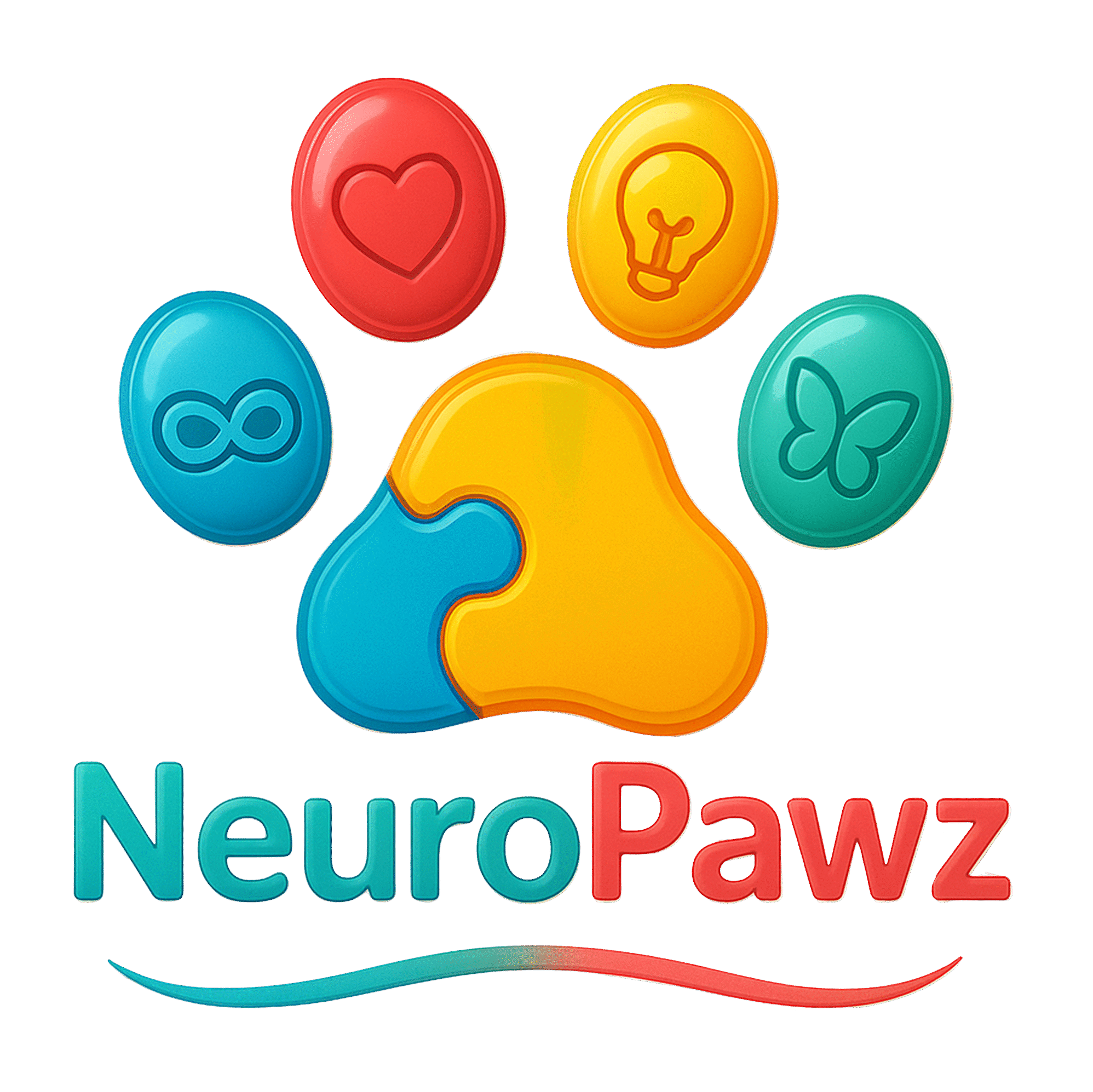Making your own homemade pet toys has become an increasingly popular way to keep furry, scaly, or feathery companions entertained and happy. It’s also a really practical option for anyone who enjoys DIY projects, lives on a limited budget, or just wants to add a personal touch to their pet’s playtime. As someone who’s always on the lookout for ways to give my pets a boost when it comes to enrichment—while staying aware of sensory needs and neurodivergent routines—I’ve found that DIY toys offer a ton of control over what materials and textures your pets explore. Ready to dig into what materials work well, what’s safe, and how to create toys that support your pet’s wellbeing and yours, too? Time to roll!

Go-To Materials for Homemade Pet Toys
One of the best things about making your own pet toys is just how many options you have for materials. You can usually source them from things lying around the house, making it ideal for anyone who likes to upcycle or wants to save some cash. If you (or your pets) have sensory sensitivities, there are a bunch of ways to mix in or avoid certain textures, smells, or sounds.
- Old T-Shirts and Fabric: A classic for a reason. Cotton or fleece is soft, easy to knot, and washable. Always skip anything with tiny decorations, glitter, or glued elements. If strong scents bother anyone in your household, run fabric through the wash first.
- Nylon Rope: Great for tug or chewing toys. Double-check for fraying and use undyed rope if you’re worried about dye allergies or mouth sensitivities.
- Cardboard Boxes and Tubes: Cats and small pets love checking out cardboard. Make sure there are no sharp edges or staples, and steer clear of boxes with lots of ink if anyone in the house is odor sensitive.
- Natural Rubber: Works well for chewers. Be sure the rubber is non-toxic and unscented, since even mild odors can be a lot to deal with for sensitive pets or neurodivergent people nearby.
- Plain Wood Blocks: Hardwood chunks (untreated, sanded smooth) are great for gnawing toys. Don’t use varnished or painted wood, as they might contain toxins or give off unpleasant smells.
- Socks (Unworn or Washed): Rolled up socks turn into excellent tuggers for dogs or kickers for cats. Go tagless and check for loose threads.
- Plastic Bottles (Empty and Clean): Only for supervised play. These offer amazing sensory input with their crinkly sounds but might stress out animals or humans who are noise-averse.
Always avoid small, swallowable items, metal bits, and anything sharp or easily breakable. Your pets—especially neurodivergent ones—often have their own likes and dislikes around sounds or textures, so experiment a bit and see what works for them.
Understanding Sensory and Behavioral Safety for All Types of Pets
Safety is about so much more than just steering clear of choking hazards or broken toys. It’s the bigger picture: you want enrichment that’s emotionally safe for your pets (and everyone else in the home). For neurodivergent pet owners, this means balancing routines and managing sensory loads, so things stay calm and comfortable for everyone.
- Texture Awareness: Some pets (like some humans) can be particular about textures. Dogs may dislike things that are slimy, while some birds might back away from certain plastics. Try different textures and be observant for signs your pet is getting overstimulated, like backing away, hiding, or simply refusing to engage with the toy.
- Sound and Smell Sensitivities: Toys with bells or crunchy plastic can either be a huge win or a disaster. If anyone in the house (human or animal) is sensitive to noise or smells, stick with quiet toys or use unscented, natural materials.
- Predictability in Routine: Many neurodivergent people—and pets—feel best when things go as expected. Try switching up toys one at a time, making the change slower. This helps everyone get used to new things without feeling overwhelmed.
- Monitoring Chewing or Plucking Behaviors: Chewing helps many dogs and some rodents chill out, but it’s important to monitor the intensity. Birds who pluck or shred can benefit from rope or cardboard, but be alert if it turns into a compulsion—sometimes it means a new kind of enrichment or downtime is in order.
Creative and Safe DIY Toy Ideas
Here are several pet-tested (and neurodivergent-friendly) toy ideas that balance stimulation, safety, and sanity for pets and their humans.
- TShirt Rope Braid: Cut old shirts into strips, braid tightly, knot the ends, and you’ve got a practical tug toy! Works for most dogs and many cats. Use unscented detergent when cleaning your fabric.
- Cardboard Puzzle Feeder: Cut holes into a small box, add treats, and let cats, dogs, or rabbits figure out the puzzle. For extra sensitivity to sound, line the box with cloth or felt.
- Featherfree Wand Toy: For pets prone to plucking or with sensitivities, swap out feathers for felt or fleece strips on a stick. It’s still engaging, washable, and less likely to trigger allergies.
- Crunchy Sock Bottle: Slip a clean, empty bottle inside a thick sock (tie it off), and hand it over for crunchy, supervised play. This one’s an eye-catching favorite for pets who crave sensory feedback!
- Natural Wood Chew: Sanded, untreated hardwood sticks are perfect chew toys for rabbits, guinea pigs, and birds. Use safe wood species like apple, willow, or aspen, and always check for splinters.
Even basic ideas like hiding treats in paper balls or freezing snacks in ice cubes help you mix in some variety—offering new textures and fun activities for pets who enjoy a little novelty (in easy-to-handle doses).
DIY Pet Toy Safety Checklist
Making sure DIY toys are safe matters for both your pet’s health and everyone’s peace of mind—especially in neurodivergent households where emergencies can feel extra stressful. Here’s a quick checklist to cover your bases:
- Use pet safe, natural, and hypoallergenic materials only.
- Check for loose threads, tags, staples, or small plastic parts every time.
- Supervise any new play session, especially if it’s your first time working with that material.
- Match toy sizes to your pet so there are no accidental choking risks.
- Watch for scents and sounds: steer clear of perfumes, heavy dyes, or loud materials if anyone’s noise sensitive.
- Toss any toy that becomes damaged, soaked, or dirty beyond cleaning.
- If you live with sensorysensitive or easily overwhelmed animals, only introduce one new toy at a time and allow plenty of downtime to help everyone adjust.
Common Challenges and Solutions for DIY Pet Toys
You might hit a few snags with homemade pet toys, especially in households where neurodivergent routines rule or where you have a bunch of pets with wildly different needs. Here’s a look at the most common headaches and some fixes:
- Durability Issues: Some pets are experts at destroying soft toys. Try double braiding or even sewing the seams, or switch up to thicker, sturdier materials like solid rubber for heavy chewers.
- Sensory Overload: Too many options or noisy toys can boost anxiety. Stick with gradual rotation, go easy on new textures, or cool it with high-contrast but quiet playthings if your household has a low sensory threshold.
- Waste Concerns: Upcycle when you can, but avoid anything that’s touched harsh cleaners, food, or pet waste. If being ecofriendly matters, compost your cardboard or fabric toys when they’re worn out instead of tossing them in the trash.
- Pet Disinterest: Sometimes a toy just doesn’t get any attention. Keep a bin for “try again later” toys—likes and dislikes often switch up, and what’s boring now could be a hit next month!
Quick Guide to Making Toy Time More Enjoyable for Neurodivergent Households
- Prepare Supplies in Advance: If gathering craft supplies is overwhelming, prep your materials in batches during high-energy moments so you’ll have everything ready during low-energy times.
- Create a SensoryFlexible Toy Bin: Sort toys by category (soft, loud, chewy, etc.) so you or your pet can grab just the right kind when energy or sensory levels change.
- Use Visual Schedules: For everyone who loves routine, make an easy-to-read rotation chart showing which toys get used each day. It’ll help everyone know what to expect.
- Take Breaks During Play: Especially for sensitive households, keep play sessions short and build in recovery-friendly “quiet time” zones for both pets and people.
Supporting both pets and people means watching for patterns, respecting personal limits, and being open to changing things up as needs develop.
Frequently Asked Questions
There are a few questions that keep coming up, particularly for neurodivergent pet families or anyone just starting out with homemade toys:
Question: Are all household fabrics safe for DIY pet toys?
Answer: Stick to natural, untreated cotton, fleece, or denim. Skip wool or anything that sheds, and avoid strong-smelling materials, since overwhelming scents can easily put off pets or anyone with sensory sensitivities.
Question: How often should I swap out homemade toys?
Answer: Give toys a swap every week if you can, but always move at your own and your pet’s pace—especially if predictable routines are important in your house.
Question: What if my pet is scared of new toys?
Answer: Take it slow, set new toys near objects your pet already trusts, or add treats to create positive vibes. Pets with anxiety (or owners on the autism spectrum) often do best with slow introductions and plenty of time to explore new stuff at their own pace.
Benefits of DIY Pet Toys for Neurodivergent and Sensitive Families
Crafting your own pet toys supports a lot more than just basic play. For neurodivergent folks, it helps build up routines, makes environments more predictable, and offers a low-pressure outlet for hands-on creativity. Plus, you get to upcycle, cut costs, and try out what really works for your unique pet’s needs—no guessing required.
Homemade toys keep everything flexible, fun, and tuned in to everyone’s sensory comfort zone, which matters for pets and people alike. And honestly? Watching your pet chase, chew, or pounce on a DIY toy you whipped up yourself is always pretty eye-catching and rewarding!
